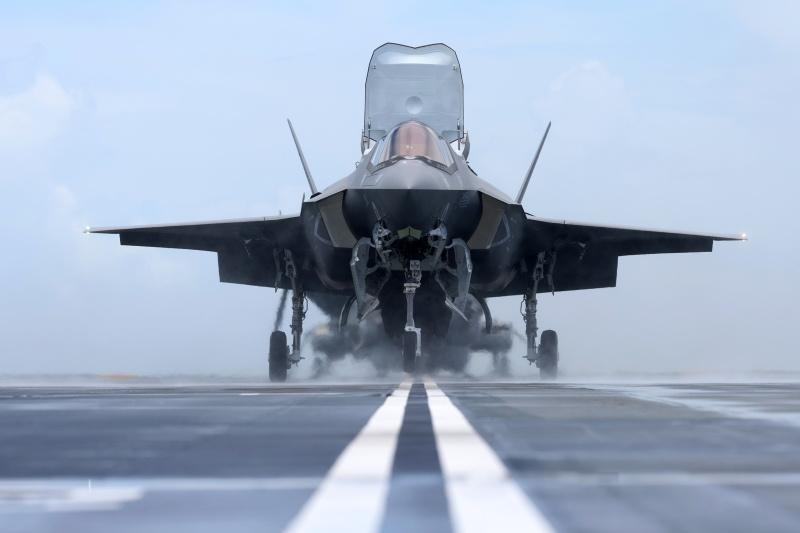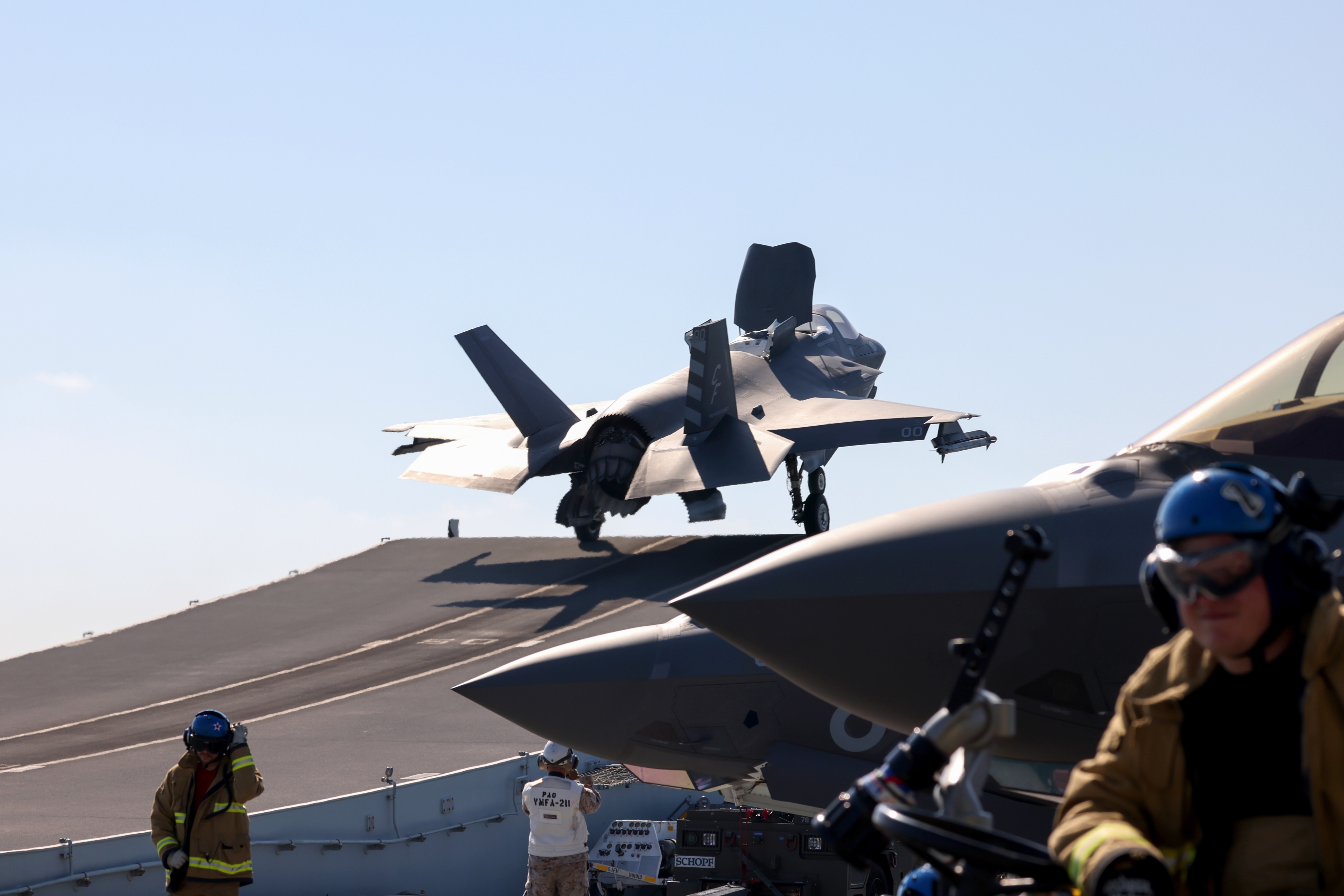A video purportedly showing a British F-35B falling off the aircraft carrier HMS Queen Elizabeth has gone viral on the internet. The accident involving the fifth-generation stealth fighter jet made headlines recently.
Russia’s ‘White Swan’ Tu-160M Supersonic Bomber Getting ‘Ready For Action’ Amid Renewed Tensions With NATO
The clip, most likely shot with a smartphone since the actual video was possibly taken by the aircraft’s camera system, is viewed on a computer screen. The UK Ministry of Defense has neither refuted nor confirmed the authenticity of the video.
Well thank God he is still with us! That’s all I can say. pic.twitter.com/YtL6f0BFAm
— Seb H (@sebh1981) November 29, 2021
In the video, the F-35B, capable of short takeoff and vertical landing (STOVL), is seen with its LIFT fan door open and rear nozzle rotated downward. It rolls on the ski jump at a very low speed, far lower than normal, and then falls off the carrier due to a lack of thrust/lift. As the plane approaches the final section of the ski jump, the pilot manages to eject to safety.

The video of the incident bolstered the theory that a plastic rain cover was pulled into the plane’s engine, causing it to fail. The footage has also sparked concerns about whether the £100 million warplane hit HMS Queen Elizabeth when it sank in the Mediterranean Sea on November 17.
In response to a video purporting to show the F-35 crash after launching from HMS Queen Elizabeth earlier this month, an MoD spokesperson said:
"We are aware of a video circulating online. It is too soon to comment on the potential causes of this incident."
— Henry Jones (@hthjones) November 29, 2021
The carrier will be extensively checked once it returns to Portsmouth in the coming days after a seven-month maiden cruise to the Far East and back, according to a Royal Navy source cited by Sky News.
Bid To Retrieve The F-35 From Seabed
As previously reported by EurAsian Times, the fighter jet that fell in the Mediterranean Sea after taking off from HMS Queen Elizabeth was one of the eight British F-35Bs besides 10 US Marine Corps F-35s that were onboard the carrier’s inaugural operational cruise.
The @RoyalNavy's @HMSQNLZ and @HMSPWLS have simultaneously launched F-35B Lightning fighter jets ??? ??? ????? ????. ✈️ ⚓
Full story. ? https://t.co/87uRXF3FeG
— Forces News (@ForcesNews) September 21, 2021
The underlying cause of the tragedy was found to be a plastic, red rain cover that was supposed to be removed before the flight but was left on for takeoff, according to an exclusive report published by The Sun on November 23.
aAlthough it’s uncertain which plastic cover was left on during the flight, it’s possible it’s the one that protects the dorsal air intake from being exposed when the LIFT fan door is opened.
It’s also worth noting that the UK Ministry of Defense has remained tightlipped on the scenario detailed by The Sun. Anonymous sources quoted by the British tabloid “blamed human error and oversight” for the blunder.
The cause of the aircraft’s loss is still being investigated. The Ministry of Defense is trying to ensure that no enemy forces gain access to any of the technology used on the high-end aircraft, which features cutting-edge sensors, radars, and other sensitive equipment. It’s the first time that the UK has lost any F-35.
The country is now left with 23 Lockheed Martin stealth aircraft and an additional 24 are slated for delivery by the end of 2025.

Earlier, British defense minister Ben Wallace told Sky News that Russian fighter jets were tailing the HMS Queen Elizabeth carrying the F-35 jets, and a fleet of support ships as they returned from a first tour of the Far East.
Wallace said that Moscow was very interested in the HMS Queen Elizabeth and its F-35 fighter jets. According to the report, Russia had previously ordered multiple aircraft to “buzz” the British carrier strike group as it passed through the Bosphorus Strait in June.
The fact that no other planes were grounded as a result of the mishap indicates that the problem with the downed plane was highly specific.
Efforts to recover the jet seem to be going on in full swing. It is possible that the plane may not have suffered extensive damage given the slow speed at which it was rolling before falling off the carrier. Hours after the disaster, it was reported that the UK had requested the US for help to recover the jet.
Its location on the seabed may take some time to determine. The depth of the Levantine Sea, where the jet was lost, varies but averages 1,500 meters. Since an airframe does not fall vertically like a stone, it presumably ‘glided’ as it plunged, carrying it some distance from the ditching location, based on the depth of the sea.
A spokeswoman for the United Kingdom’s government has also confirmed to USNI News that the US Navy is helping with the recovery, assigning a ship and crew to assist in the “deep salvage mission”. According to the same report, Italy has also chipped in.
- Contact the author at ashishmichel@gmail.com
- Follow EurAsian Times on Google News




